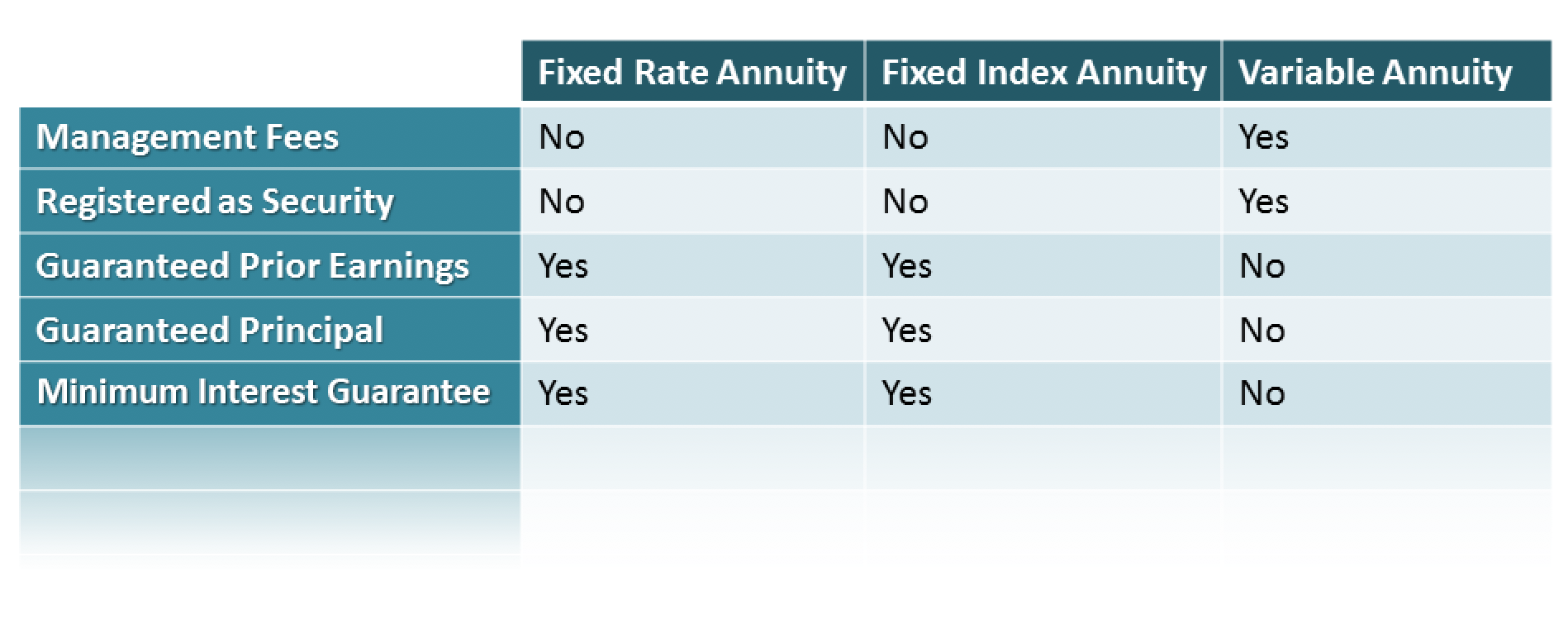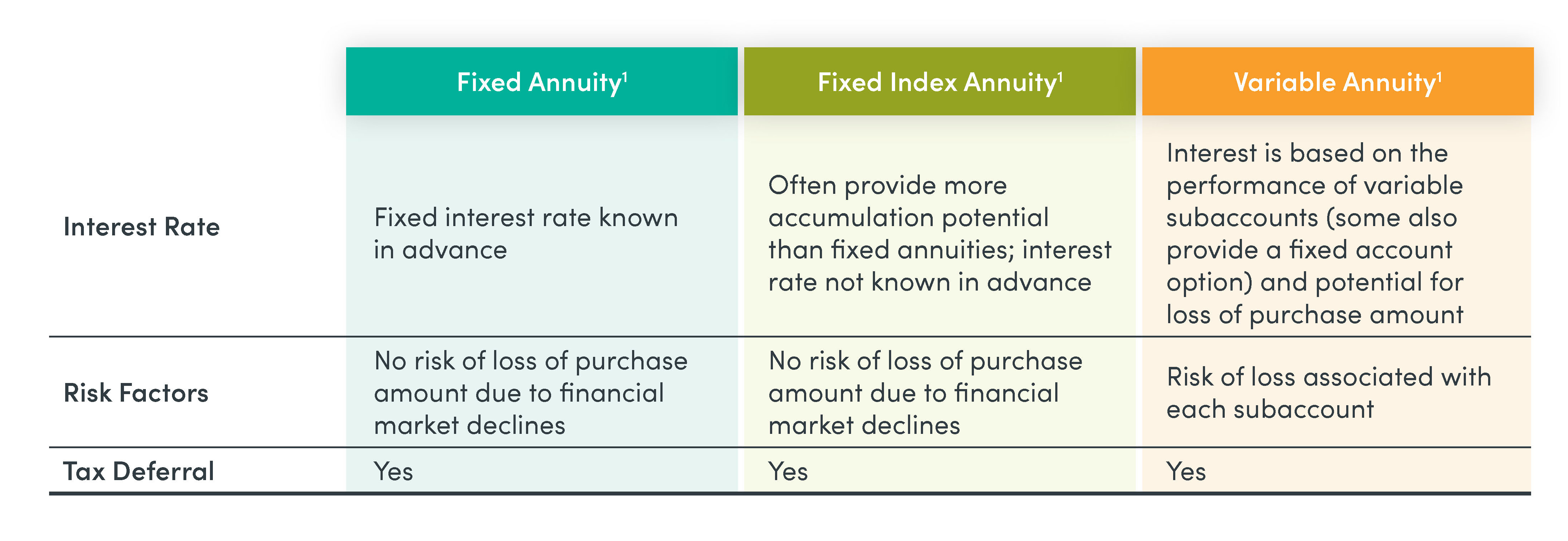All Categories
Featured
Table of Contents
Equally as with a taken care of annuity, the owner of a variable annuity pays an insurer a round figure or collection of repayments for the assurance of a collection of future repayments in return. But as discussed over, while a taken care of annuity expands at a guaranteed, continuous rate, a variable annuity expands at a variable rate that depends upon the performance of the underlying financial investments, called sub-accounts.

Throughout the buildup stage, possessions spent in variable annuity sub-accounts grow on a tax-deferred basis and are strained just when the contract owner withdraws those profits from the account. After the build-up phase comes the earnings phase. Gradually, variable annuity properties ought to in theory increase in worth until the agreement proprietor chooses she or he want to begin taking out money from the account.
The most significant problem that variable annuities normally existing is high price. Variable annuities have a number of layers of charges and expenses that can, in accumulation, create a drag of up to 3-4% of the contract's value each year.
Understanding Pros And Cons Of Fixed Annuity And Variable Annuity A Closer Look at Fixed Annuity Vs Variable Annuity What Is the Best Retirement Option? Pros and Cons of Variable Vs Fixed Annuity Why Fixed Vs Variable Annuity Pros And Cons Matters for Retirement Planning Deferred Annuity Vs Variable Annuity: A Complete Overview Key Differences Between Fixed Vs Variable Annuity Pros And Cons Understanding the Rewards of Retirement Income Fixed Vs Variable Annuity Who Should Consider What Is Variable Annuity Vs Fixed Annuity? Tips for Choosing Indexed Annuity Vs Fixed Annuity FAQs About Planning Your Financial Future Common Mistakes to Avoid When Planning Your Retirement Financial Planning Simplified: Understanding Tax Benefits Of Fixed Vs Variable Annuities A Beginner’s Guide to Smart Investment Decisions A Closer Look at How to Build a Retirement Plan
M&E expense costs are computed as a portion of the agreement value Annuity companies pass on recordkeeping and various other administrative costs to the agreement owner. This can be in the type of a flat annual cost or a percentage of the contract worth. Administrative fees may be consisted of as part of the M&E threat fee or may be evaluated individually.
These charges can vary from 0.1% for passive funds to 1.5% or even more for proactively taken care of funds. Annuity agreements can be tailored in a variety of methods to serve the details demands of the agreement proprietor. Some usual variable annuity riders include ensured minimum buildup benefit (GMAB), guaranteed minimum withdrawal advantage (GMWB), and guaranteed minimum income advantage (GMIB).
:max_bytes(150000):strip_icc()/VariableAnnuitization-asp-v1-5dedf8fee4694d8dacd2ac7eb7b0757e.jpg)
Variable annuity contributions offer no such tax reduction. Variable annuities have a tendency to be highly inefficient automobiles for passing wealth to the future generation because they do not appreciate a cost-basis change when the initial agreement owner dies. When the proprietor of a taxed financial investment account dies, the price bases of the investments held in the account are adjusted to show the market costs of those investments at the time of the proprietor's death.
Understanding Financial Strategies Everything You Need to Know About Fixed Vs Variable Annuities Defining the Right Financial Strategy Benefits of Choosing the Right Financial Plan Why Choosing the Right Financial Strategy Matters for Retirement Planning How to Compare Different Investment Plans: A Complete Overview Key Differences Between Pros And Cons Of Fixed Annuity And Variable Annuity Understanding the Rewards of Long-Term Investments Who Should Consider Fixed Indexed Annuity Vs Market-variable Annuity? Tips for Choosing Variable Vs Fixed Annuities FAQs About What Is A Variable Annuity Vs A Fixed Annuity Common Mistakes to Avoid When Choosing Annuities Fixed Vs Variable Financial Planning Simplified: Understanding Your Options A Beginner’s Guide to Annuities Variable Vs Fixed A Closer Look at Fixed Vs Variable Annuity Pros And Cons
Consequently, successors can inherit a taxable financial investment profile with a "clean slate" from a tax viewpoint. Such is not the situation with variable annuities. Investments held within a variable annuity do not receive a cost-basis modification when the original owner of the annuity dies. This suggests that any type of collected unrealized gains will be handed down to the annuity proprietor's beneficiaries, together with the associated tax concern.
One significant problem associated with variable annuities is the capacity for conflicts of passion that may feed on the part of annuity salesmen. Unlike an economic consultant, who has a fiduciary obligation to make financial investment decisions that benefit the client, an insurance coverage broker has no such fiduciary responsibility. Annuity sales are very profitable for the insurance policy professionals that sell them due to high upfront sales commissions.

Several variable annuity contracts consist of language which puts a cap on the portion of gain that can be experienced by specific sub-accounts. These caps prevent the annuity owner from totally participating in a part of gains that can otherwise be appreciated in years in which markets produce considerable returns. From an outsider's point of view, it would certainly appear that capitalists are trading a cap on financial investment returns for the aforementioned ensured floor on investment returns.
As noted over, surrender charges can significantly restrict an annuity proprietor's capacity to relocate properties out of an annuity in the early years of the contract. Better, while many variable annuities enable agreement owners to take out a specified amount during the accumulation phase, withdrawals yet quantity generally result in a company-imposed charge.
Withdrawals made from a fixed rate of interest rate financial investment choice could also experience a "market price change" or MVA. An MVA adjusts the worth of the withdrawal to reflect any kind of modifications in rate of interest from the time that the cash was purchased the fixed-rate option to the moment that it was taken out.

On a regular basis, also the salesmen that offer them do not totally recognize how they work, and so salesmen in some cases exploit a purchaser's emotions to market variable annuities as opposed to the values and suitability of the items themselves. We think that capitalists must completely comprehend what they own and just how much they are paying to own it.
Exploring the Basics of Retirement Options A Closer Look at What Is A Variable Annuity Vs A Fixed Annuity Breaking Down the Basics of Fixed Vs Variable Annuities Benefits of Choosing the Right Financial Plan Why Fixed Annuity Or Variable Annuity Is Worth Considering Annuity Fixed Vs Variable: Explained in Detail Key Differences Between Different Financial Strategies Understanding the Risks of Long-Term Investments Who Should Consider Strategic Financial Planning? Tips for Choosing the Best Investment Strategy FAQs About Planning Your Financial Future Common Mistakes to Avoid When Planning Your Retirement Financial Planning Simplified: Understanding Annuities Fixed Vs Variable A Beginner’s Guide to Variable Annuities Vs Fixed Annuities A Closer Look at Variable Annuities Vs Fixed Annuities
Nonetheless, the same can not be stated for variable annuity assets kept in fixed-rate investments. These assets legitimately come from the insurer and would certainly for that reason go to threat if the company were to fail. Any warranties that the insurance coverage company has agreed to give, such as an assured minimum earnings advantage, would certainly be in concern in the event of a company failure.
Prospective purchasers of variable annuities ought to comprehend and consider the economic problem of the providing insurance policy business before entering into an annuity agreement. While the benefits and drawbacks of different types of annuities can be discussed, the real issue surrounding annuities is that of suitability. Put just, the concern is: that should possess a variable annuity? This inquiry can be tough to address, given the myriad variations offered in the variable annuity cosmos, however there are some fundamental guidelines that can help capitalists decide whether or not annuities should contribute in their economic plans.
As the saying goes: "Customer beware!" This short article is prepared by Pekin Hardy Strauss, Inc. Variable growth annuities. ("Pekin Hardy," dba Pekin Hardy Strauss Riches Monitoring) for informational purposes just and is not meant as an offer or solicitation for company. The details and data in this short article does not comprise legal, tax, accountancy, financial investment, or various other professional recommendations
Table of Contents
Latest Posts
Breaking Down Fixed Index Annuity Vs Variable Annuities Everything You Need to Know About Financial Strategies Defining the Right Financial Strategy Benefits of Variable Annuities Vs Fixed Annuities W
Decoding Variable Annuity Vs Fixed Indexed Annuity Key Insights on Your Financial Future Breaking Down the Basics of Variable Annuity Vs Fixed Indexed Annuity Features of Fixed Interest Annuity Vs Var
Decoding How Investment Plans Work Everything You Need to Know About Tax Benefits Of Fixed Vs Variable Annuities Breaking Down the Basics of Fixed Interest Annuity Vs Variable Investment Annuity Advan
More
Latest Posts